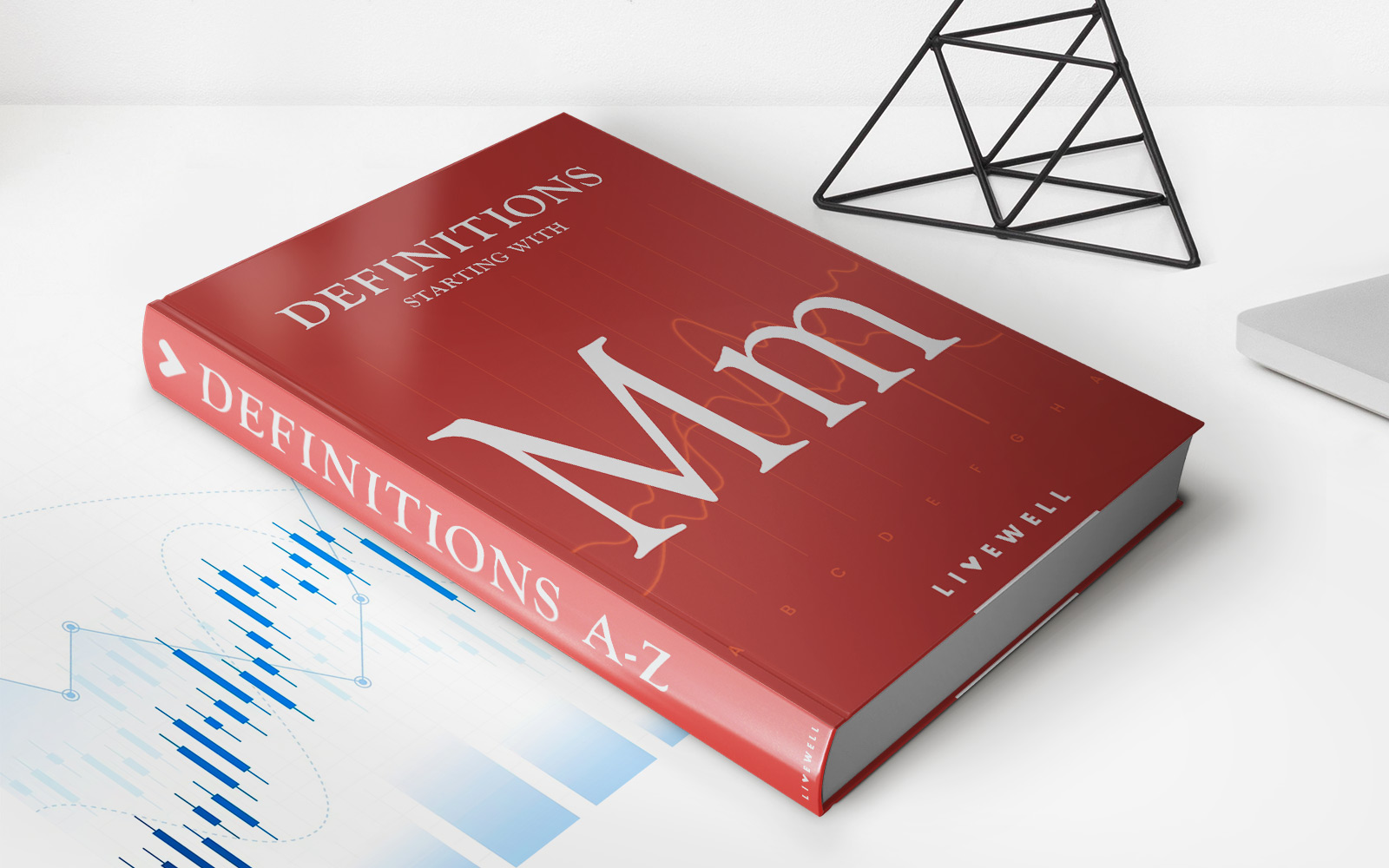

Finance
How Many Mutual Funds Should I Have
Published: November 27, 2023
Find out the optimal number of mutual funds you should have to diversify your portfolio and maximize your finance goals.
(Many of the links in this article redirect to a specific reviewed product. Your purchase of these products through affiliate links helps to generate commission for LiveWell, at no extra cost. Learn more)
Table of Contents
- Introduction
- Importance of Diversification
- Factors to Consider
- Risk Tolerance
- Investment Goals
- Time Horizon
- Types of Mutual Funds
- Asset Allocation
- Number of Mutual Funds to Consider
- Benefits of Owning Multiple Mutual Funds
- Risks of Owning Multiple Mutual Funds
- Best Practices for Portfolio Diversification
- Conclusion
Introduction
When it comes to investing in mutual funds, one common question that arises is: How many mutual funds should I have in my portfolio? It’s a valid concern, as finding the right balance between diversification and managing your investments effectively is crucial for long-term financial success.
Diversification is a key principle in investment strategy, and mutual funds offer a convenient way to achieve it. By investing in a variety of mutual funds, you can spread your risk across different asset classes, regions, and investment styles. This can help minimize the impact of market volatility on your overall portfolio and potentially increase your chances of generating consistent returns.
However, owning too many mutual funds can also have drawbacks. It may lead to over-diversification, diluting the potential performance of your portfolio. Additionally, managing a large number of funds can become time-consuming and complex.
So, how do you strike the right balance? The answer depends on several factors, including your risk tolerance, investment goals, time horizon, and the types of mutual funds you choose to invest in.
In this article, we will explore the various factors to consider when deciding how many mutual funds to have in your portfolio. We will examine the benefits and risks of owning multiple funds and provide some best practices for achieving optimal portfolio diversification.
Importance of Diversification
Diversification is a fundamental principle in investment strategy, and it plays a crucial role in managing risk and achieving long-term financial objectives. By spreading your investments across a variety of assets, you can lower the overall risk in your portfolio.
One of the main benefits of diversification is reducing the impact of market volatility on your investments. Different asset classes, such as stocks, bonds, and commodities, tend to perform differently under various market conditions. By allocating your investments across these different asset classes, you can potentially reduce the impact of a downturn in one area by the performance of another.
Furthermore, diversification allows you to tap into different sectors and regions of the global economy. This provides the opportunity to benefit from pockets of growth and minimize exposure to specific industries or countries that may underperform. For example, if you have all your investments in one industry, a negative event or economic downturn affecting that industry could have a significant impact on your portfolio. But if you have investments across various sectors and regions, the losses from one area can be offset by gains in others.
Mutual funds are an excellent tool for diversification as they typically hold a diversified portfolio of assets within a single investment vehicle. By investing in different mutual funds, you gain exposure to a wide array of securities, including stocks, bonds, and other financial instruments.
Another advantage of diversification through mutual funds is the ability to access professional fund managers’ expertise. These managers conduct in-depth research and analysis to make investment decisions on behalf of the fund’s investors. They have the knowledge and resources to select a diversified mix of securities that align with the fund’s investment objectives and manage the portfolio actively.
It is important to note that diversification does not guarantee profits or protect against losses in a volatile market. However, it provides an effective risk management strategy that can potentially improve your overall investment performance over the long term. By spreading your investments across different asset classes, sectors, and regions, you can reduce the impact of any individual investment’s poor performance on your entire portfolio.
Factors to Consider
When deciding how many mutual funds to have in your portfolio, there are several important factors to consider. These factors will help you determine the appropriate level of diversification based on your individual circumstances and investment goals.
- Risk Tolerance: Your risk tolerance is a critical factor in determining the number of mutual funds in your portfolio. If you have a higher risk tolerance, you may be comfortable with a smaller number of funds, focusing on more aggressive asset classes or investments. Conversely, if you have a lower risk tolerance, you may prefer a larger number of funds to spread your risk more widely across different asset classes.
- Investment Goals: Your investment goals play a vital role in shaping your portfolio structure. Are you primarily looking for capital appreciation, income generation, or a combination of both? The answer to this question will help determine the types of mutual funds you should consider and the level of diversification needed to achieve your goals.
- Time Horizon: Your time horizon refers to the length of time you are willing to invest your money before needing to access it. If you have a longer time horizon, such as several decades for retirement, you may have more flexibility in owning a larger number of mutual funds. However, if you have a shorter time horizon, such as saving for a down payment on a home within a few years, you may want to focus on a smaller number of funds to maintain liquidity.
- Types of Mutual Funds: Different types of mutual funds offer exposure to various asset classes, regions, and investment strategies. Depending on your investment objectives, you may need to own a specific number of funds to gain exposure to the desired areas of the market. For example, if you want to invest in international equities, you may need to include separate funds for developed markets and emerging markets.
- Asset Allocation: Asset allocation refers to the distribution of your investments across different asset classes, such as stocks, bonds, and cash. The appropriate allocation will depend on your risk tolerance and investment goals. If you have a well-diversified asset allocation with a mix of different asset classes within a few funds, you may not need to own as many mutual funds. However, if you prefer a more granular asset allocation, owning a larger number of funds may be necessary.
Remember, these factors are not independent of each other, and they should be considered collectively to determine the appropriate number of mutual funds for your portfolio. It is essential to strike a balance between diversification and manageability to ensure that your investments align with your overall financial objectives.
Risk Tolerance
Understanding your risk tolerance is vital when deciding how many mutual funds to have in your portfolio. Risk tolerance refers to your ability and willingness to handle fluctuations in the value of your investments.
Investing involves inherent risks, and the value of investments can fluctuate due to various factors, such as market conditions, economic events, and changes in company performance. Some investors are comfortable with the potential for higher returns and are willing to accept greater volatility in their portfolios. Others prefer more stability and are more risk-averse.
If you have a higher risk tolerance, you may feel comfortable owning a smaller number of mutual funds. These funds may focus on aggressive growth stocks or sectors with higher volatility, offering the potential for higher returns. By consolidating your investments into a few funds, you can concentrate your exposure and potentially capitalize on specific investment opportunities.
On the other hand, if you have a lower risk tolerance, you may prefer a larger number of funds to spread your investments across different asset classes and mitigate risk. This can help protect your portfolio from significant losses associated with a single investment or asset class. By diversifying your holdings, you can reduce the overall volatility of your portfolio and potentially achieve more stable returns over the long term.
It’s important to note that risk tolerance is a personal assessment and can vary from investor to investor. Factors such as age, financial goals, income stability, and investment experience can all influence an individual’s risk tolerance. Additionally, risk tolerance may change over time, reflecting changes in personal circumstances or market conditions.
It is recommended to take a comprehensive approach when evaluating your risk tolerance. This can involve assessing your financial situation, considering your emotional response to market fluctuations, and discussing your investment goals with a financial advisor. By gaining a clear understanding of your risk tolerance, you can align it with the number and types of mutual funds in your portfolio to achieve a suitable level of diversification.
Investment Goals
When determining how many mutual funds to have in your portfolio, your investment goals play a significant role. Your investment goals typically reflect what you aim to achieve with your investments, whether it’s capital appreciation, generating income, or a combination of both.
If your primary investment goal is capital appreciation, you may choose to have a portfolio with a smaller number of mutual funds. These funds may focus on growth-oriented investments, such as stocks of companies with strong potential for future expansion. By concentrating your investments in a few select funds, you can closely monitor their performance and potentially capitalize on significant market opportunities.
On the other hand, if your goal is income generation, you may consider a larger number of mutual funds that focus on dividend-paying stocks, bonds, or other income-generating securities. By diversifying across these different assets, you can create a more stable and consistent stream of income. Owning multiple income-focused funds can also help mitigate the risk associated with individual holdings, as income streams may come from various sources.
If your investment goals include both capital appreciation and income generation, your portfolio may require a balanced approach. In this case, a moderate number of mutual funds that offer a mix of growth and income-oriented investments may be suitable. This allows you to capture potential market upside while also maintaining a level of stability through income-generating assets.
It’s important to note that investment goals can vary significantly depending on an individual’s financial situation, time horizon, and risk tolerance. Additionally, investment goals may change over time, requiring adjustments to your portfolio composition. Regularly reassessing your investment goals and aligning them with the number and types of mutual funds in your portfolio can help ensure that your investment strategy remains in line with your objectives.
Consider consulting with a financial advisor who can provide personalized guidance based on your specific investment goals and help you select the appropriate mutual funds to achieve those objectives.
Time Horizon
When determining how many mutual funds to have in your portfolio, it is important to consider your time horizon. The time horizon refers to the length of time you are willing to invest your money before needing to access it.
If you have a longer time horizon, such as several decades for retirement, you may have more flexibility in owning a larger number of mutual funds. Having a longer investment horizon allows you to potentially ride out market fluctuations and take advantage of long-term growth opportunities. By owning multiple mutual funds, you can diversify your investments across different asset classes, sectors, and regions, enhancing the potential for long-term returns.
Conversely, if you have a shorter time horizon, such as saving for a down payment on a home within a few years, you may want to focus on a smaller number of funds to maintain liquidity. In this case, you may prioritize preserving capital rather than maximizing returns. By investing in a select few mutual funds with shorter-term objectives, such as money market funds or short-duration bond funds, you can potentially access your funds when needed without being exposed to significant market volatility.
Your time horizon also plays a role in determining the appropriate level of risk within your portfolio. Generally, longer time horizons allow for a greater allocation to growth-oriented investments, such as stocks, which tend to exhibit higher volatility in the short term but may offer higher potential returns over an extended period. Conversely, shorter time horizons often necessitate a greater focus on capital preservation and income-generation, favoring more stable and less volatile assets, such as bonds or cash equivalents.
It is important to regularly reassess your time horizon and adjust your portfolio accordingly. As your time horizon shortens, it may be prudent to gradually transition to more conservative investments that align with your changing needs. Consulting with a financial advisor can help you determine the optimal number and types of mutual funds based on your specific time horizon and investment objectives.
Types of Mutual Funds
When considering how many mutual funds to have in your portfolio, it is crucial to understand the different types of mutual funds available to you. Mutual funds come in a variety of categories, each offering exposure to specific asset classes, sectors, regions, or investment strategies.
Equity Funds: These mutual funds invest primarily in company stocks. They can be further categorized based on market capitalization, such as large-cap, mid-cap, and small-cap funds. Equity funds are known for their potential for capital appreciation but also come with higher risk compared to other types of funds.
Bond Funds: Bond funds invest in fixed-income securities, such as government bonds, corporate bonds, and municipal bonds. They aim to generate income through regular interest payments and may provide more stability compared to equity funds. Bond funds can be further classified based on the type of bonds they hold, such as government bond funds or high-yield corporate bond funds.
Money Market Funds: Money market funds invest in short-term, low-risk securities like Treasury bills and commercial paper. They seek to maintain a stable net asset value (NAV) of $1 per share and provide investors with easy access to cash. Money market funds are considered to be low-risk, providing a safe haven for short-term investments or as a temporary holding place for funds before investing in other assets.
Index Funds: Index funds aim to replicate the performance of a particular market index, such as the S&P 500 or the FTSE 100. These funds provide broad market exposure and typically have lower expense ratios compared to actively managed funds. Index funds are ideal for investors seeking a passive investment approach with a focus on capturing the overall market returns.
Sector Funds: Sector funds concentrate on specific industry sectors, such as technology, healthcare, or energy. These funds allow investors to target their investments in areas they believe will outperform the broader market. While sector funds can potentially provide higher returns, they also come with increased risk and volatility.
International/Global Funds: These funds invest in securities outside the investor’s home country. International funds focus on specific regions, such as Europe or Asia, while global funds provide a broader global exposure. Investing in international or global funds can provide diversification benefits by accessing opportunities and economic cycles in different parts of the world.
Each type of mutual fund has its own risk-return profile and investment objective. When constructing your portfolio, it is important to consider a mix of these different fund types that align with your risk tolerance, investment goals, and desired level of diversification. By diversifying across fund types, you can capture the benefits of different asset classes and potentially improve your overall risk-adjusted returns.
Asset Allocation
Asset allocation is a crucial aspect of portfolio construction and plays a significant role in determining the number of mutual funds you should have. Asset allocation refers to the distribution of your investments across different asset classes, such as stocks, bonds, cash, and alternative investments.
The appropriate asset allocation depends on your risk tolerance, investment goals, and time horizon. It is generally recommended to have a diversified asset allocation to spread risk and potentially enhance returns.
When it comes to asset allocation, you have two primary approaches:
- Broad Allocation: This approach involves selecting a few mutual funds that provide exposure to multiple asset classes. For example, you might choose a balanced fund that holds a mix of stocks, bonds, and cash. These funds offer diversification within a single investment vehicle and can simplify the portfolio management process. With a broad allocation approach, you may need a smaller number of mutual funds in your portfolio.
- Granular Allocation: This approach involves selecting individual mutual funds that focus on specific asset classes or sectors. For example, you might choose separate funds for large-cap stocks, small-cap stocks, international equities, and fixed income. This granular allocation allows for more fine-tuning and customization of your investment exposure. With a granular allocation approach, you may need a larger number of mutual funds in your portfolio to achieve the desired level of diversification and targeted exposure.
When determining the appropriate asset allocation and the number of mutual funds, consider your risk tolerance, investment goals, and time horizon. A more aggressive investor with a longer time horizon may opt for a higher allocation to stocks, while a more conservative investor or someone closer to retirement may prefer a higher allocation to bonds and cash.
Furthermore, your asset allocation should be periodically reviewed and rebalanced to maintain its desired allocation percentages. Changes in the market or the performance of different asset classes can cause your portfolio to deviate from its intended allocation. Rebalancing involves selling investments that have outperformed and using the proceeds to buy underperforming assets, ensuring that your asset allocation stays aligned with your risk tolerance and investment strategy.
Ultimately, the key is to find an asset allocation that suits your risk profile and investment objectives. It is recommended to consult with a financial advisor who can help you assess your risk tolerance, identify the appropriate asset allocation, and select the right mutual funds that align with your desired diversification and investment strategy.
Number of Mutual Funds to Consider
Deciding on the number of mutual funds to include in your portfolio can be challenging. While there is no one-size-fits-all answer, there are some general considerations to help guide your decision.
One important factor to consider is the level of diversification you aim to achieve. Diversification is a key principle in investing, as it helps spread risk across different asset classes and investments. By owning multiple mutual funds, you can gain exposure to a broader range of companies, sectors, regions, and investment styles. This diversification can potentially help mitigate the impact of market volatility on your overall portfolio and reduce the risk associated with individual holdings.
However, owning too many mutual funds can also lead to over-diversification, diluting the potential for meaningful returns. It may also make it more challenging to manage your portfolio effectively. Each additional fund adds complexity and may require additional time and effort to monitor and evaluate.
A common rule of thumb is to aim for a well-diversified portfolio of around 10 to 20 mutual funds. This range provides a good balance between diversification and manageability. It allows you to have exposure to different asset classes, sectors, and regions while still being able to effectively monitor and adjust your investments as needed.
When selecting the number of mutual funds, consider the following:
- Asset Classes: Aim to have exposure to a mix of equities, bonds, and other asset classes that align with your investment goals and risk tolerance. Depending on the level of diversification you desire within each asset class, you may require multiple funds.
- Sector/Industry Exposure: If you wish to target specific sectors or industries, such as technology or healthcare, you may need additional funds to achieve the desired exposure.
- Geographic Diversity: If you want to invest in different regions or countries, consider including funds that focus on specific geographic areas to achieve the desired diversification.
- Investment Strategies: If you prefer a mix of investment strategies, such as growth, value, or income, you may need multiple funds to align with each strategy.
Remember, the goal is to strike a balance between diversification and manageability. Owning too few funds can result in an inadequate level of diversification, while owning too many can lead to complexity and potential inefficiencies. Regularly review and evaluate your portfolio to ensure that it remains aligned with your investment objectives and risk tolerance.
Consider working with a financial advisor who can assess your individual circumstances, help you determine the appropriate number of mutual funds, and construct a well-diversified portfolio tailored to your needs.
Benefits of Owning Multiple Mutual Funds
Owning multiple mutual funds in your investment portfolio can offer several benefits that contribute to a well-rounded and diversified approach to investing.
- Diversification: One of the primary benefits of owning multiple mutual funds is diversification. By investing in a variety of funds, you can spread your risk across different asset classes, sectors, regions, and investment styles. This diversification can help mitigate the impact of market volatility on your overall portfolio and reduce the risk associated with individual holdings.
- Access to Different Asset Classes: Different mutual funds focus on various asset classes, such as stocks, bonds, cash equivalents, or even alternative investments. By owning multiple funds, you can gain exposure to a broader range of asset classes, allowing you to potentially benefit from different market conditions and investment opportunities.
- Professional Fund Management: Mutual funds are managed by experienced investment professionals who conduct in-depth research and analysis to make investment decisions on behalf of the fund’s investors. By owning multiple funds, you can access the expertise of different fund managers, each specializing in their respective asset classes or investment strategies.
- Customized Investment Strategies: Owning multiple mutual funds enables you to create a customized investment strategy that aligns with your individual financial goals and risk tolerance. You can select funds that focus on growth, income, value, or other specific investment objectives. This customization allows you to tailor your portfolio to your unique investment needs.
- Opportunity for Higher Returns: By diversifying your investments across multiple funds, you have the potential to capture the performance of various sectors, regions, and investment styles. This wider exposure can increase your chances of benefiting from outperforming areas of the market and potentially enhance your overall investment returns.
It’s important to note that while owning multiple mutual funds can offer benefits, it is essential to strike a balance and avoid over-diversification. The number of funds should be manageable, allowing you to effectively monitor and evaluate your investments. Regularly review your portfolio to ensure that the funds you own continue to align with your investment goals and risk tolerance.
Consider seeking guidance from a financial advisor who can help you select a diversified mix of mutual funds that are well-suited to your investment objectives and provide appropriate levels of diversification.
Risks of Owning Multiple Mutual Funds
While there are benefits to owning multiple mutual funds, it’s important to be aware of the potential risks and challenges that come with managing a portfolio of multiple funds.
- Over-Diversification: One of the risks of owning too many mutual funds is over-diversification. When you own a large number of funds, you may end up with overlapping holdings and duplicate exposure to certain assets. Over-diversification can dilute the impact of well-performing investments and reduce the potential for significant returns.
- Increased Complexity: Managing a portfolio with multiple mutual funds can become complex and time-consuming. Each fund may have its own investment strategy, performance, and fees. Monitoring the funds, evaluating their performance, and rebalancing the portfolio can require significant effort and attention.
- Higher Costs: Owning multiple mutual funds can result in higher investment costs. Each fund typically has its own expense ratio, which represents the management fees and other operating expenses. Holding a large number of funds can potentially intensify the impact of these expenses on your overall investment returns.
- Asset Allocation Challenges: Maintaining a balanced asset allocation strategy can be more challenging when owning numerous mutual funds. If one fund outperforms others, it may lead to an unintentional overweighting in that particular asset class. Regularly rebalancing the portfolio can help address this challenge, but it requires diligent monitoring and adjustment of fund allocations.
- Complex Tax Management: Owning multiple funds can complicate tax management, especially if there are overlapping holdings of similar assets across different funds. It may also result in increased paperwork and reporting requirements for tax purposes.
To mitigate these risks, it’s important to strike a balance between diversification and complexity. Consider the following strategies:
- Choose a manageable number of mutual funds that provide sufficient diversification across asset classes and investment strategies.
- Regularly review and monitor the performance of your funds to identify any overlap or underperformance.
- Focus on broad-based funds that provide exposure to multiple asset classes to simplify portfolio management and reduce complexity.
- Weigh the costs of owning multiple funds and ensure that the potential benefits outweigh the associated expenses.
- Consult with a financial advisor who can help you assess the suitability and manageability of your portfolio, taking into consideration your investment goals and risk tolerance.
Owning multiple mutual funds can offer diversification and potentially enhance investment returns. However, it’s important to approach it with careful consideration and ensure that the benefits outweigh the risks and challenges involved.
Best Practices for Portfolio Diversification
Effective portfolio diversification is an essential part of successful investing. By following these best practices, you can optimize your portfolio diversification and increase the potential for long-term investment success:
- Set Clear Investment Goals: Clearly define your investment goals, including your risk tolerance, time horizon, and desired returns. This will guide your portfolio diversification strategy and help you select the appropriate mix of mutual funds.
- Asset Allocation: Determine the optimal asset allocation based on your risk tolerance and investment goals. Allocate your investments across different asset classes such as stocks, bonds, cash, and alternative investments to achieve diversification.
- Consider Index Funds or ETFs: Index funds and exchange-traded funds (ETFs) can offer broad market exposure and low expense ratios. They can be a cost-effective way to diversify your portfolio across a wide range of assets and sectors.
- Choose Complementary Mutual Funds: Select mutual funds that complement each other by providing exposure to different asset classes, investment styles, sectors, and regions. This will enhance diversification and reduce the risk associated with relying on a single investment strategy or asset class.
- Regularly Monitor and Rebalance: Regularly monitor the performance of your mutual funds and rebalance your portfolio to maintain your desired asset allocation. This entails buying or selling funds to restore the original proportions of your asset allocation in response to market movements.
- Review Fund Overlap: Examine the holdings of each mutual fund to assess whether there is excessive overlap. If there is significant duplication between funds, it may be necessary to consolidate or seek alternative options to achieve better diversification.
- Consider Risk-Adjusted Returns: When evaluating mutual funds, consider their risk-adjusted returns rather than solely focusing on past performance. A fund’s volatility and downside risk should be assessed alongside its potential for returns to ensure it aligns with your risk tolerance.
- Diversify across Time Horizons: Consider diversifying not only across different asset classes but also across different time horizons. This can involve investing in funds with varying investment horizons, such as short-term, intermediate-term, and long-term, to capture potential returns while managing risk.
- Stay Informed and Seek Professional Advice: Stay informed about market trends, economic indicators, and industry developments. Consider working with a financial advisor who can provide expert guidance and help you tailor your portfolio diversification strategy based on your specific needs and goals.
Remember that diversification does not guarantee profits or protect against losses, but it can help manage risk and potentially improve long-term investment performance. Regularly review and adjust your portfolio based on changing market conditions, personal circumstances, and investment objectives to ensure your portfolio remains well-diversified and aligned with your evolving financial goals.
Conclusion
Deciding how many mutual funds to have in your portfolio is a critical decision that requires careful consideration of various factors. Achieving an optimal level of diversification is essential for managing risk and potentially enhancing investment returns. By considering your risk tolerance, investment goals, time horizon, and the types of mutual funds available, you can create a well-diversified portfolio tailored to your individual needs.
Owning multiple mutual funds offers the benefits of diversification across different asset classes, sectors, and geographic regions. It provides access to professional fund management expertise and the opportunity to customize your investment strategy. However, it’s important to strike a balance to avoid over-diversification, increased complexity, and higher costs.
Implementing best practices for portfolio diversification, such as setting clear investment goals, determining appropriate asset allocation, monitoring and rebalancing, and reviewing fund overlap, will help guide your decision-making process. It’s also crucial to stay informed, assess risk-adjusted returns, and seek guidance from a financial advisor who can provide personalized advice based on your unique circumstances and objectives.
Remember, portfolio diversification is an ongoing process. Regularly review and adjust your portfolio to ensure it remains aligned with your changing financial goals and market conditions. By striking the right balance between diversification and manageability, you can position yourself for long-term investment success while effectively managing risk.
Ultimately, your investment portfolio should reflect your individual financial objectives and risk tolerance. Take the time to evaluate your needs and seek professional guidance as needed to construct a well-diversified portfolio of mutual funds that aligns with your goals and helps you achieve financial success.














